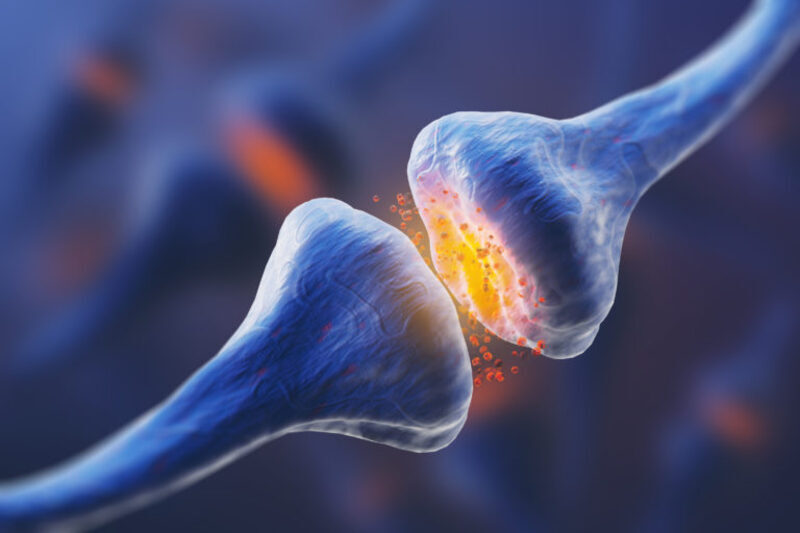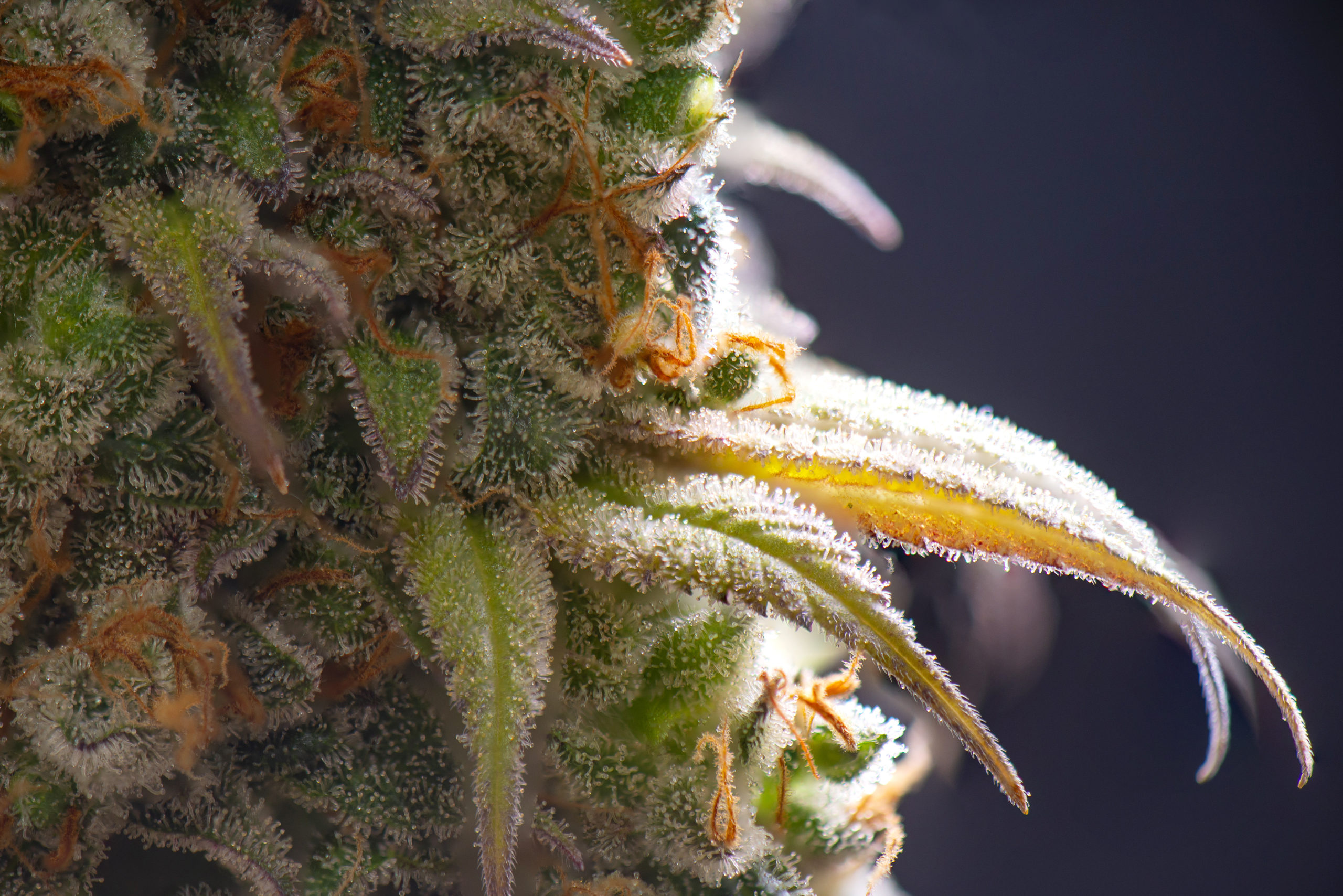-
- Market Research
- |
- CBD Near Me
- |
- Giveaways
- |
- Newsletter
- |
- Contact
- |
- Advertise
- |

Painkillers, especially opioids, are killing the American population. Truly an epidemic, opioids are responsible for more than 130 American deaths every day, and they killed an estimated 52,000 Americans in 2018. Thankfully, researchers are bringing cannabidiol (CBD) onto the scene at this critical time. CBD is a natural pain reliever that does not carry the risk of addiction or abuse. In some cases, patients with chronic pain have entirely replaced their painkiller prescription with CBD. Available evidence points to CBD as an effective and safer alternative to managing pain.
An Overview of Chronic Pain and Painkillers
Chronic pain, defined as pain lasting for six or more months, is a significant health issue in America.
A 2015 report published in U.S. Pharmacist by Somnath Pal, a professor of pharmacy administration at St. John’s University, said that about 116 million Americans live with chronic pain.
The prevalence of pain has led to the widespread usage of painkillers.
According to data from the National Survey on Drug Use and Health in September 2016, an estimated 97.5 million people used prescription painkillers, and about 12.5 million of those misused the painkillers.
The survey also estimated that 2 million people have a painkiller use disorder.
Those in the United States disproportionately consume these highly addictive opioid painkillers.

In a February 2018 article about America’s opioid epidemic published by New York Magazine, journalist Andrew Sullivan notes, “We consume 99 percent of the world’s hydrocodone and 81 percent of its oxycodone. We use an estimated 30 times more opioids than is medically necessary for a population our size.” (emphasis added)
Types of Painkillers
Painkillers can be split into two forms: opioids and non-opioids. Here is a list of common painkillers:
| OPIOIDS | NON-OPIOIDS |
| Codeine (Found in Tylenol and Robitussin) | Aspirin (e.g., Advil) |
| Fentanyl (Actiq, Duragesic) | Ibuprofen |
| Hydrocodone (Lorcet, Lortab) | Easprin |
| Morphine (Kadian) | Acetaminophen (Tylenol) |
| Methadone (Dolophine) | |
| Oxycodone (OxyContin) |
Opioid painkillers are intended to treat moderate and severe pain, while non-opioids are often sufficient for mild pain, such as a sore back or headache.
How Painkillers Work
Opioid painkillers target the opioid receptors in the body, which typically exist in the brain and spinal cord.
The opioids block pain signals, relieving an individual’s perception of pain without actually interacting with the source of the pain.
Non-opioids work differently.
Non-steroidal anti-inflammatory drugs (NSAIDs), like aspirin and ibuprofen, target a group of hormones called prostaglandins, which are created at the source of an injury and send pain signals.
NSAIDs reduce the production of prostaglandins, preventing pain.
Another non-opioid, acetaminophen (Tylenol), seems to block chemicals in the brain that create pain signals.
How Opioid Use Can Lead to Addiction
When opioids interact with opioid receptors, they increase the release of endorphins.
Endorphins are neurotransmitters that alleviate pain and produce feelings of euphoria.
As opioid use persists, an individual can develop a tolerance to the drug.
Tolerance occurs when the current dosage of opioids can no longer achieve the same level of euphoria, which is a result of the body creating fewer endorphins.
This leads people to use higher doses of opioids to feel good again.
Eventually, euphoric feelings can fade entirely, and patients will take opioids just to feel normal.
If a patient decides to stop using the painkillers, the withdrawal symptoms will likely be worse than the initial pain the patient was taking opioids to treat in the first place.
All of these factors can contribute to opioid addiction.

Side Effects of Painkillers
Painkillers can come with several potentially adverse side effects. In the case of opioids, side effects can include:
- Constipation
- Drowsiness
- Nausea
- Vomiting
- Addiction
Non-opioid medications can also cause complications, such as:
- Increased risk of heart attack or stroke
- Stomach ulcers and gastrointestinal bleeding
- Kidney problems
Contrary to some painkillers, CBD lacks severe side effects or the possibility of addiction, making it a potentially safer option for treating pain.
Studies on CBD for Pain
Research has shown that modulating the endocannabinoid system (ECS) and administering CBD are viable options in the treatment of pain.
Painkillers are known to interact with the ECS.
Studies show opioids activate ECS receptors to help relieve pain, and NSAIDs enhance the level of endocannabinoids in the body to decrease pain perception.
Several studies suggest CBD is an essential element in pain treatment, especially for patients who have had trouble finding relief with medications.
Research also indicates CBD could help treat inflammatory and neuropathic pain.
This means it could be useful in diseases such as cancer, multiple sclerosis, arthritis, and many others that involve chronic pain.
Equally important, researchers are finding that CBD has a favorable safety profile and could be safer than many other traditional medications.
The following studies demonstrate these effects of CBD.

Review on CBD for Difficult to Treat Pain
In a review by Ethan Russo, a neurologist who worked for GW Pharmaceuticals (a UK-based biopharmaceutical company known for its cannabis-based medicines), Russo surveys scientific literature on CBD and other cannabinoids to assess their efficacy for difficult to treat pain.
Russo finds that CBD can reduce inflammation, protect neurons, modulate the endocannabinoid system, and is an antioxidant, all of which may contribute to CBD’s ability to alleviate pain.
Russo also notes studies using Sativex, an oromucosal spray with a 1:1 CBD to tetrahydrocannabinol (THC) ratio, for pain.
One study, in particular, tested 177 cancer patients with pain that could not be treated with opioids.
The study split the patients into three groups that were treated with Sativex, a THC extract, or a placebo. Sativex significantly reduced pain more than the placebo or THC extract, indicating that CBD is “crucial” in pain relief.
Russo also suggests that CBD is safe.
Unlike NSAIDs, which may cause gastrointestinal ulcers and bleeding as a result of inhibiting the COX-1 enzyme, CBD and THC do not pose these risks.
Also, Russo shows that CBD “diminishes” the psychoactive effects of THC and, while possessing no risk of addiction or dependency itself, lowers the potential for abuse with treatments containing THC.
Review of the Endocannabinoid System in Pain Management

Research by the Instituto de Neurociencias de Alicante (Neurosciences Institute of Alicante) in Spain reviewed the role of the endocannabinoid system (ECS) in managing pain.
The review found that agonists of cannabinoid receptors in the ECS can help modulate pain, especially neuropathic pain.
These agonists would include the natural cannabinoids that are found in the body, such as anandamide and 2-arachidonoylglycerol (2-AG).
Slowing the breakdown of these cannabinoids may also present a potential option for pain therapy.
Researchers also shared evidence of synergy between the ECS and the opioid system.
For example, when CB2 receptors are activated, opioid endorphins are released which activate opioid receptors to relieve the perception of pain.
NSAIDs have been confirmed to interact with the ECS as well, specifically the CB1 receptors.
The researchers believe NSAIDs inhibit an enzyme called fatty acid amide hydrolase (FAAH), an action CBD has been shown to do as well.
FAAH is responsible for metabolizing anandamide, which binds with CB1.
Thus, inhibiting FAAH increases levels of anandamide, which leads to more activity at the CB1 receptors and subsequent pain relief.
The researchers conclude that enhancing endocannabinoid levels with anandamide reuptake inhibitors or by inhibiting the enzyme FAAH could be valuable therapeutic targets.
Study on Sativex for Allodynia
The Division of Neurological Science at the University of Liverpool conducted a study testing Sativex in patients with neuropathic pain characterized by allodynia (stimuli cause pain that usually does not, such as lightly touching the skin) for five weeks.
The researchers split the 125 patients into two groups where 63 were given Sativex while 62 were given a placebo.
Each patient was kept on their current analgesic medication.
Results showed that Sativex significantly reduced neuropathic pain scores over the placebo.
The average reduction of Sativex to placebo was -1.48 points vs. -0.52 points on a 0-10 rating scale.
Researchers also conducted an extension study for 52 weeks that showed the initial pain relief was maintained without patients needing to increase their dosage (suggesting cannabinoids do not create tolerance, like opioids) and without toxicity.
Study Shows CBD Suppresses Inflammatory and Neuropathic Pain
Researchers developed a study involving several institutions across America, including the National Institute on Alcohol Abuse and Alcoholism, the National Institute on Drug Abuse, the University of Pittsburgh School of Medicine, and Johns Hopkins University, to find out the mechanism behind CBD’s anti-inflammatory and analgesic effects.
This mechanism was determined to be a subunit of glycine receptors, a set of receptors found in the central nervous system.
Glycine receptors are believed to have a role in preventing the sensation of pain.
Additionally, a subunit of the glycine receptors called α3 glycine receptors is also thought to modulate inflammatory pain.
When an injury causes pain, prostaglandins (hormones released when an injury occurs) send pain signals.
A specific prostaglandin called PGE2 is believed to inhibit the function of the α3 glycine receptors, enhancing pain perception and inflammation.
CBD was administered to mice through the spinal canal to test its interaction with the α3 glycine receptors.
Researchers found that CBD suppressed inflammatory and neuropathic pain by targeting the α3 glycine receptors.
Chemically modified CBD was also used and found to be more potent than unaltered CBD.
This chemically modified CBD reduced PGE2-induced pain sensitivity as well.
The researchers concluded that cannabinoids, such as CBD, that activate the glycine receptors are “ideal” therapies for treating inflammatory and neuropathic pain.
How CBD Treats Chronic Pain
| STUDY | FINDINGS |
| CBD modulates the nervous system | CBD may relieve pain by targeting glycine and TRPV-1 receptors |
| CBD enhances the endocannabinoid system | CBD promotes anandamide levels which may relieve pain |
| CBD alleviates inflammation | CBD reduces cytokines, which may decrease inflammation and relieve pain |
CBD has many ways to alleviate pain. Some of these include interacting with the nervous system, promoting endocannabinoid function, and reducing inflammation.
CBD Modulates the Nervous System
The nervous system is made up of the brain, spinal cord, and sensory nerves (also known as peripheral nerves) in the muscles.
Sensory nerves are responsible for sending all types of signals, including pain signals, which travel through the spinal cord to the brain.
The brain processes sensory information, and the feeling is perceived.
With chronic pain, the sensory nerves provide a constant barrage of pain signals.
In some cases, like with diseases such as arthritis, it makes sense for sensory nerves to continuously give off pain signals because the body is in a constant state of damage.
However, chronic pain where no disease is observed does not seem to have a reasonable cause.
In these cases, scientists believe that malfunctioning nerves send pain signals that are amplified by the spinal cord and brain, a process called central sensitization.
Central sensitization can lead to hypersensitivity to pain and allodynia.
In both scenarios, research shows CBD may alleviate this neuropathic pain.
CBD seems to reduce pain hypersensitivity by targeting the TRPV1 receptors, which are known for playing a role in the modulation of pain perception.
CBD, directly and indirectly, activates TRPV1 receptors.
Directly, CBD binds with TRPV1 and desensitizes the receptors, leading to reduced pain sensitivity.
Indirectly, CBD enhances levels of anandamide, which is known to bind with TRPV1, by inhibiting its enzyme, allowing higher levels of anandamide in the body and more interaction with TRPV1.
Another way CBD can relieve pain is by targeting glycine receptors in the spinal cord, as mentioned above in the multi-institution study about CBD suppressing inflammatory and neuropathic pain.
Targeting glycine receptors may lead to chronic pain relief and a reduction of hypersensitivity to pain.
CBD Enhances the Endocannabinoid System

Anandamide, a natural cannabinoid found in the human body, is known to influence several functions in the body.
One of these is the perception of pain.
A study led by the University of California, Irvine, showed that an increase of anandamide in the peripheral nervous system could suppress the initiation of pain.
Researchers boosted anandamide levels in sensory nerves by inhibiting the activity of anandamide’s enzyme called fatty acid amide hydrolase (FAAH), which resulted in significantly reduced pain signals sent to the central nervous system.
Since anandamide produces its effects by binding with CB1 receptors, the study also discovered that CB1 could regulate pain signals sent to the central nervous system.
This finding could help prevent central sensitization.
CBD has been shown to effectively prevent the breakdown of anandamide and enhance anandamide’s ability to relieve pain.
Anandamide is transported to FAAH by fatty acid-binding proteins (FABPs).
However, CBD binds with FABPs and stops them from transporting anandamide to FAAH.
CBD also reduces FAAH activity, significantly increasing anandamide levels, which may lead to pain relief.
CBD Reduces Inflammation
Inflamed areas of the body are often sensitive and painful to touch.
Pain usually occurs because the swelling is pushing against nerves, which send pain signals to the brain.
CBD has well-documented anti-inflammatory properties such as reducing inflammation in diseases like arthritis, inhibiting neuroinflammation in neurodegenerative diseases such as Alzheimer’s, and relieving inflammatory pain.
There seem to be several mechanisms CBD utilizes to reduce inflammation.
CBD significantly reduces cytokines, which are pro-inflammatory proteins released by the immune system.
One of the most abundant cytokines in inflammation is called tumor necrosis factor (TNF).
CBD inhibits the release of TNF, reducing existing inflammation and hindering further inflammation from occurring.
Additionally, CBD reduces inflammation through the TRPV1 receptors and CB2 receptors.
CB2 receptors are found on immune cells and, when activated, can prompt the natural deaths of the cells, leading to a decrease in inflammation.
Can CBD Replace Painkillers?
CBD has been known to help some people wean off and replace their painkillers.
An article published in The Daily Telegraph, a British newspaper, tells the story of Richard Holt who uses CBD oil in place of painkillers to alleviate the pain that remains from injuries he received from a severe accident.
Holt fell out of a window that left both of his legs severely damaged, requiring surgery and physical therapy.
To relieve the pain after the accident, Holt took Oxycontin, an opioid painkiller.
After taking it for several months, Holt began to feel “groggy and crushed.”
He decided to stop taking Oxycontin and experienced intense withdrawal symptoms.
Eventually, Holt was introduced to CBD.
He described CBD’s effect on his pain as “profound,” allowing him to be physically active instead of confined to the sofa.
Holt also enjoys that CBD is safe to use.
He experiences no negative long-term impacts like he did with Oxycontin.
Holt is not the only one who has decided to use CBD instead of painkillers.
A July 2017 study by HelloMD, an online medical cannabis community, and Brightfield Group, a strategic research firm for the cannabis industry, collected data from 2,400 HelloMD users about their cannabis use.
Results showed that 42% of respondents said they use cannabis instead of other medications for their conditions, including but not limited to pain.
Is CBD Right for You?
As increasingly more people require painkillers and turn to highly addictive opioids, the need for new, effective treatments is paramount.
Thankfully, researchers are showing that CBD may be an answer to one of America’s most deadly epidemics.
Evidence shows CBD can alleviate neuropathic pain, inflammatory pain, and potentially replace painkillers.
CBD is also safe, with no potential for addiction or abuse.

Pain does not have to control your life; CBD may help you live a healthier, more pain-free life.
Have you used CBD to alleviate pain? What kind of results did you achieve? Tell us your story in the comments below!
Disclaimer: The content on this site is for informational purposes only. We are not medical experts and nothing should be construed as medical advice. Be sure to speak with your physician before taking CBD or any other treatment.







